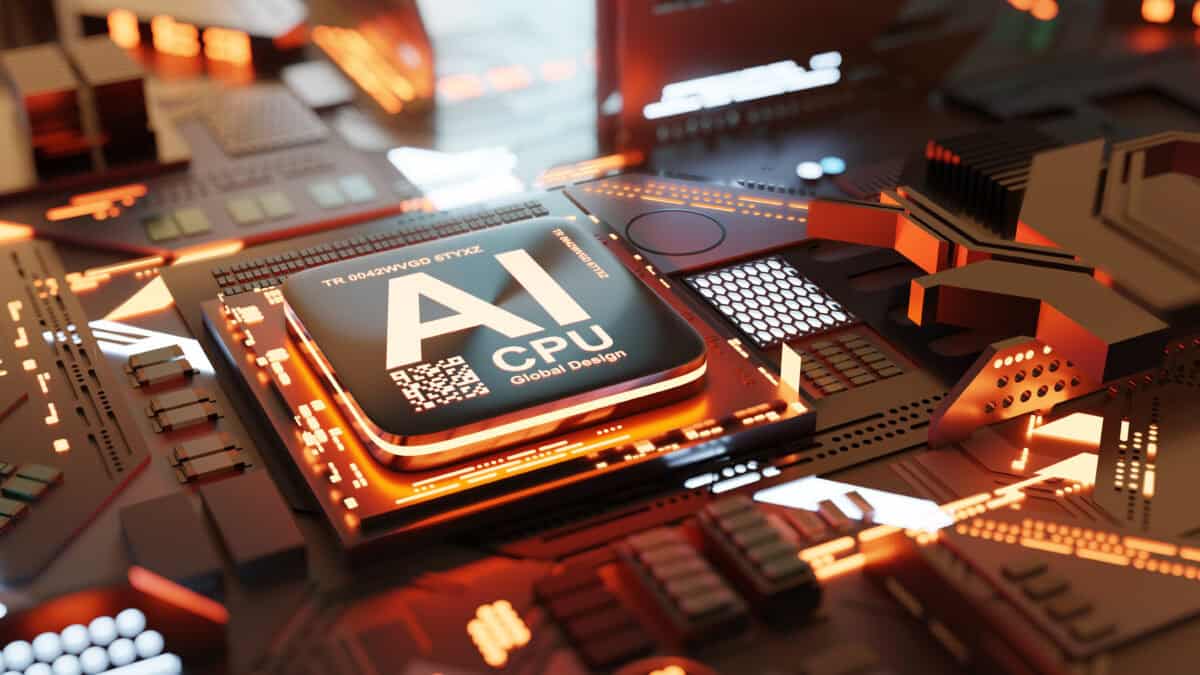This article originally appeared on The Motley Fool’s U.S. website.
The artificial intelligence revolution has caused a growth surge for the technology’s enablers, most of which reside in the semiconductor sector.
The stock movements for these companies have been so strong that many now trade at very, very high stock prices, setting these AI beneficiaries up for a potential stock split. In fact, AI darling Nvidia (NASDAQ:NVDA) just announced a 10-for-1 split during its first-quarter earnings call.
Stock splits don’t create or destroy any value on their own. After all, if a company has twice as many shares but half the stock price, the company’s total market cap remains the same. However, stock splits can help certain people afford shares if they don’t have a broker that allows fractional share buying. Moreover, splits can increase a stock’s liquidity, which can help lower-bid-ask spreads for trading purposes, and therefore attract larger funds to a stock.
Therefore, even though the following four stocks have already had very strong runs, a split could potentially drive these AI winners to even further upside.
1. Super Micro Computer
One AI stock that has had even better returns than Nvidia over the past three years is Super Micro Computer (NASDAQ:SMCI). Sure, a lot of Super Micro’s recent success is owed to Nvidia’s AI chips, but SMCI’s returns in the stock market have actually been far superior. Since July 2021, the last time Nvidia split its stock, Nvidia is up by five times. But Super Micro’s stock has increased a whopping 25 times over in less than three years. As a result, Super Micro’s stock price has appreciated to about $900 per share as of this writing, setting it up for a potential split.
A good part of that outperformance was a result of Super Micro’s starting from a significantly lower valuation. In the past, its server products were thought of as “commoditized” with a lot of other competitors in the space.
But the AI revolution has exposed the business model strengths CEO Charles Liang had been cultivating for 30 years. Architecting its servers out of, “building blocks,” or creating the smallest possible modules or server components independently, then being able to build servers out of any combination of these components, Super Micro has mass-customization capabilities that enable it to satisfy virtually any customer modification request. Not only that, but the architecture also saves on costs, as parts of a server can be refreshed instead of having to replace an entire system.
Moreover, Liang has stressed energy-efficiency in its server design for some 20 years, far before it was fashionable. But with the enormous electricity needs and costs of AI servers, Super Micro’s efficient designs are finding even more favor today. And with offices right in the heart of Silicon Valley close to Nvidia and other chipmakers, Super Micro is often able to stay ahead of competitors with the latest in-demand features such as liquid cooling, and is often first-to-market with servers containing the latest and greatest chips.
While Super Micro’s P/E ratio has ballooned from the single digits to 50 over just the past few years, it’s also displaying the growth to back it up, with a stunning 200% growth last quarter. As such, I’d expect Super Micro’s share price to at least maintain these valuation levels, with a stock split potentially in the cards.
2. Broadcom
Another AI beneficiary is Broadcom (NASDAQ:AVGO), thanks to two main factors. First, Broadcom makes the world’s leading networking and routing chips with its Tomahawk and Jericho brands, and data center networking needs are exploding thanks to the data-intensive nature of AI.
Second, Broadcom has application-specific integrated chip (ASIC) design IP that third parties can use to make AI accelerators. In this area, Broadcom has landed some big fish, with both Alphabet (NASDAQ:GOOG) and Meta Platforms (NASDAQ:META) using the company’s ASICs to design their own in-house AI accelerators.
As a result of its highly cash-generative business and AI-fueled growth, Broadcom has seen its share price rally to over $1,400 per share. That definitely puts it in the running for a stock-split.
Of course, the AI boost has only been the most recent catalyst pushing Broadcom’s stock. Even before the AI revolution, Broadcom was an impressive winner thanks to CEO Hock Tan’s visionary acquisition strategy. Over the past 18 years under his tenure, Tan has sought to acquire strong semiconductor franchises, then cutting costs as these defensible niche technologies are folded into the Broadcom corporate umbrella.
Then in 2018, Tan expanded Broadcom’s reach when it bought its first software company, California Technologies, diversifying the chipmaker into software, albeit still within its main enterprise infrastructure market. After buying cybersecurity firm Symantec in 2019, Broadcom made its biggest purchase yet in VMware, a software leader that enables hybrid cloud capabilities and data center virtualization. VMware should also benefit from the growth of AI as customers use many clouds with unique capabilities while striving to keep their data safe in their own data centers. As a result of the VMware acquisition, which closed late last year, Broadcom’s software mix has grown to roughly 40% of revenues.
Now, Broadcom isn’t just a chipmaker, but a diversified technology platform company with many ways to win. Look for its profitable growth to remain strong in the years ahead.
3. ASML Holdings
The path to making every leading-edge semiconductor, Nvidia GPUs included, runs through ASML Holdings (NASDAQ:ASML). This is because the Netherlands-based lithography company has a monopoly on key extreme ultraviolet lithography (EUV) technology needed to make today’s most advanced chips.
EUV technology took some 20 years to develop with significant buy-in from ASML’s customers to fund leading research, so don’t think that EUV capabilities can be copied anytime soon. The resulting technology allows for chipmakers to draw extremely fine transistor designs with light wavelengths that do not occur naturally on earth. And ASML’s latest version of EUV, called “high-NA” EUV, can print designs down to widths of just 8nm. ASML is set to rake in the dough from high-NA, just introduced late last year, as these machines currently go for between $300 million and $400 million a pop!
EUV only began to be used commercially in 2018, with the first EUV-enabled products coming out in 2019. So, we are still only at the beginning of the EUV era. As such, ASML has seen its stock rocket 367% over the past five years, reaching $940 per share, thus making it a candidate for a stock split.
4. Lam Research
Like ASML, Lam Research (NASDAQ:LRCX) is a semiconductor equipment leader that has also seen shares rally over the semiconductor bull market. But whereas ASML is the de facto leader in lithography, which draws designs on a silicon wafer using extremely fine light, Lam’s technology does the exacting and painstaking work of etching the printed design and then depositing semiconductor material in extremely intricate patterns to construct the chip.
While Lam doesn’t have a clear monopoly over etch and deposition technology like ASML does with EUV, Lam actually does have a monopoly over certain process steps in the chipmaking process. More specifically, Lam dominates the deposition technology crucial to “stacking” chip components in a vertical fashion. Over the past decade or so, that has led to Lam benefiting from the production of 3D NAND flash chips, in which memory-makers stack storage modules in a “3D” fashion in greater and greater numbers of layers with every generation.
Now, logic and DRAM chips crucial for AI are also “going vertical,” including high-bandwidth memory DRAM that is currently seeing such strong demand from AI applications. In fact, on its January conference call with analysts, Lam management noted it had a 100% market share in certain technologies needed for stacking DRAM modules. And with new gate-all-around transistors and 3D designs making their way into logic chips, look for Lam to get a further AI boost in the years ahead.
That’s why shares have rocketed 385% over the past five years to $941 per share as of this writing, setting this strong compounder up for a possible stock split as well.








